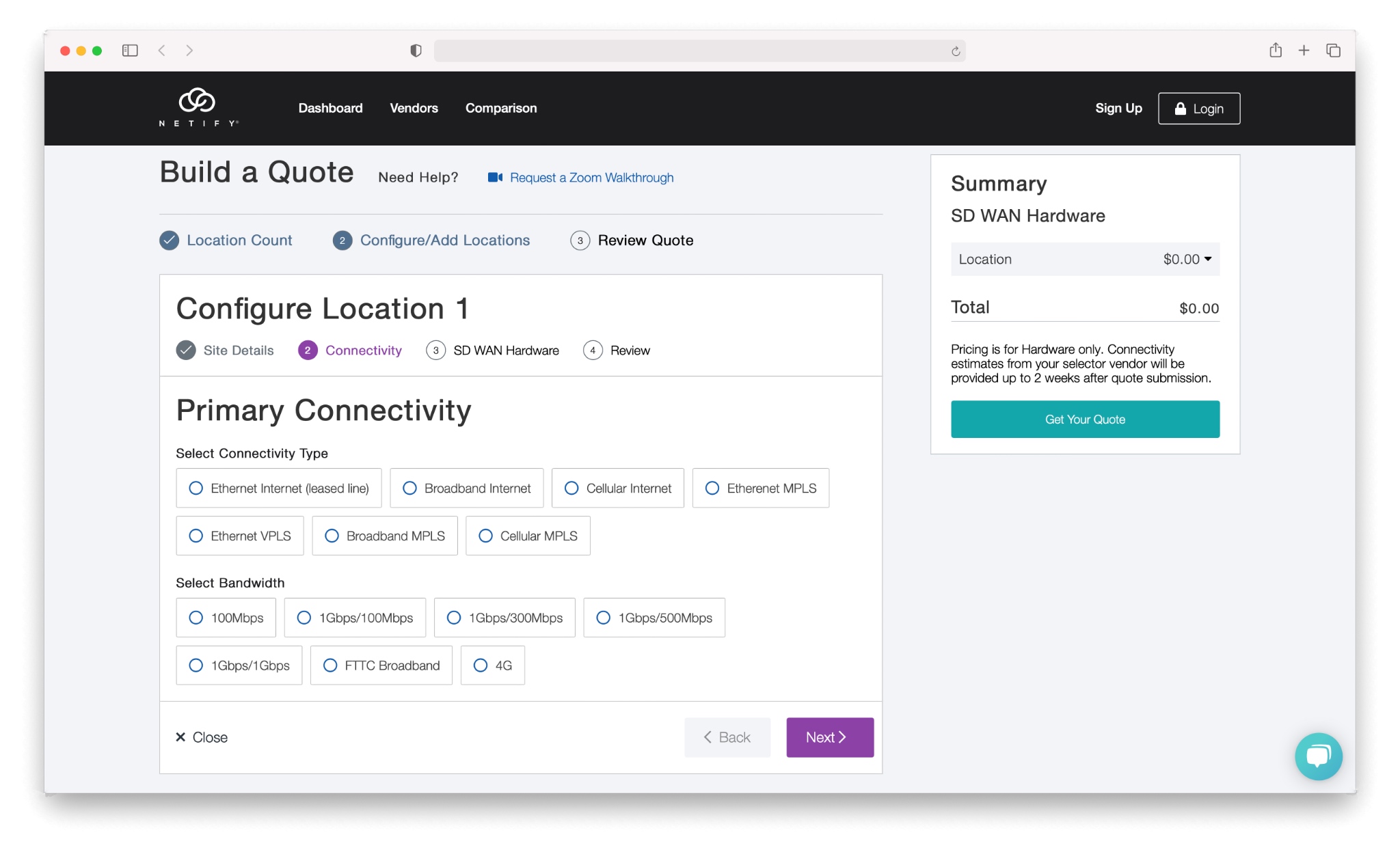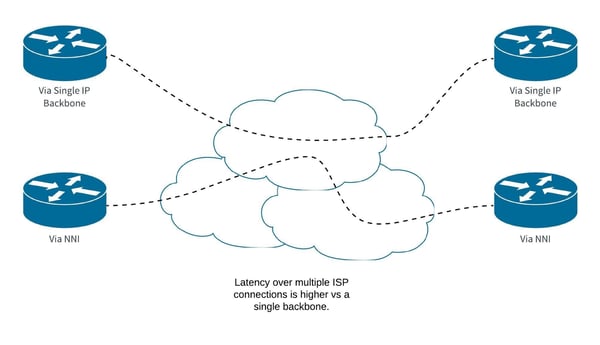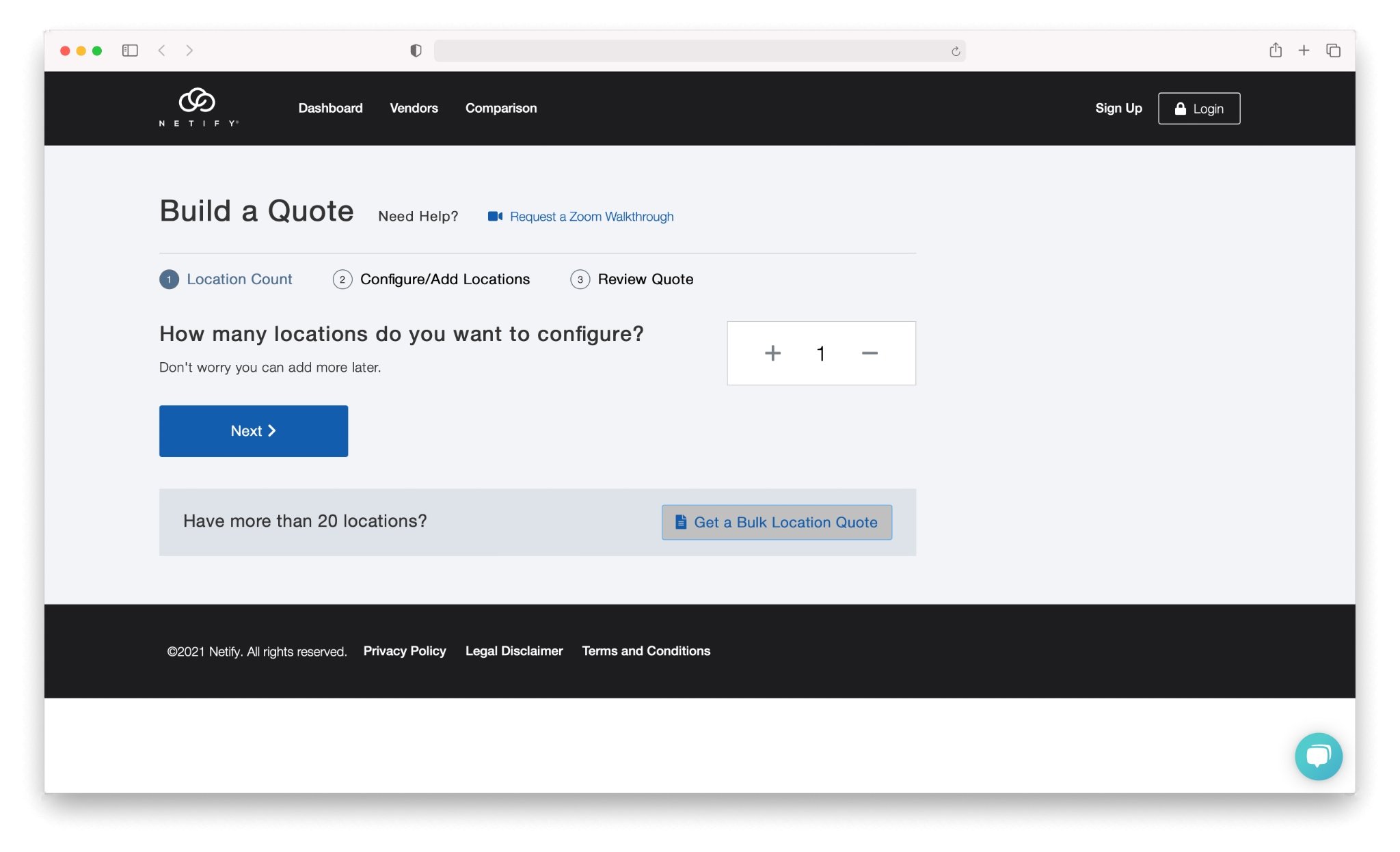The majority of organisations stand to realise substantial cost savings while enhancing the reach and performance of their networks. The expenses associated with SD-WAN solutions can vary widely, driven by factors such as network size, data consumption, and the specific features of the solution employed.
Monthly costs can range from £120 to over £800, dictated by variables such as throughput requirements and service level agreements (SLAs). With the implementation of SD-WAN, companies should experience a reduction in total cost of ownership (TCO) due to lower Internet costs and the capability to efficiently manage bandwidth and data flow.
The pricing of SD-WAN solutions is influenced by several components, from the equipment that supports the required throughput to the choice of deployment model - i.e. on-premises, cloud-based, or a hybrid approach.
The ability to scale in line with an organisation's growth, the level of security features chosen, and the kind of customer support required all play roles when calculating SD-WAN ROI. Additional aspects worth considering include the cost implications of high availability through redundancy, the impact of geographic location vs network costs, and the different pricing models available (such as subscription-based or bandwidth-based pricing).
Evaluating the Financial Implications of SD-WAN
Unlike traditional WAN services, SD-WAN offers financial advantages due to reliance on low-cost internet connections and the consolidation of networking functions. Yet, the prospect of saving on expenses does not reduce the priority for reliable application delivery and network resilience.
Businesses should understand that the lowest expenditure option might not necessarily meet application performance criteria or underpin business continuity. This is where an intelligent alignment of cost-benefit analysis and performance requirements becomes paramount.
Connectivity as a Cornerstone for Remote Access
As businesses support remote users, SD-WAN has emerged as a key solution to complete digital transformation. The provision of stable connectivity to remote teams, especially users dependent on cellular or Wi-Fi networks, underscores the agility of SD-WAN as a networking solution vs other technology
SD-WAN adapts to connection quality, which maintains a consistent level of application performance across latency and jitter. With regards to remote workers, SD-WAN optimises available connections by choosing the best path depending on performance or the policies set by IT teams.
The Integration of Diverse Internet Services
Incorporating services from multiple ISPs within a network's design could introduce additional latency and jitter, adversely affecting application performance. Consequently, ensuring the effective management of these services and the ability to support them through reliable service provisions remains a consideration.
For enterprises seeking predictable network performance, opting for a single public internet backbone might provide a more stable vs using multiple underlay Internet providers. The approach to internet underlay should be aligned with the features provided by SD-WAN, such as application acceleration and assured security measures. If your business is opting for multiple ISP providers, the SLA and performance factors should be considered.
SD-WAN and Traditional WAN Services
While SD-WAN is frequently viewed as the evolution of IPsec Internet VPN, the technology is able to operate over any connection type. The convergence of private and public networking within a single SD-WAN framework means Software-WAN is a great-fit for companies considering Hybrid services.
Business requirements often require a combination of SD-WAN's advanced features and the traditional attributes of private WAN services, underlining the importance of selecting a configuration. The use of private connectivity is reducing as the majority of companies are making use of public Cloud applications.
Essential Tools for Comparing UK SD WAN Services
When selecting SD WAN solutions, businesses should consider the following tools:
- Vendor Comparison Application: A tool that assesses your needs against a range of providers.
- Industry Analysis Reports: Documentation that outlines over two dozen SD WAN options.
- Purchasing Manuals: Guides that navigate you through the leading SD WAN services.
With the Netify SD-WAN pricing tool, you can specify specific bandwidths, whether that be via LTE, broadband, or Ethernet. These tools enable an informed choice of network infrastructure, designed for the efficient support of remote staff and the smooth operation of maintenance requirements.
Frequently Asked Questions
What Role Does SD-WAN Play in Network Management Cost Reduction?
Information technology professionals recognise that SD-WAN technology plays a significant role in reducing network management costs. By allowing greater control over network operations and providing options to utilise less expensive connectivity methods, such as broadband in place of costlier MPLS circuits, organisations can experience a decrease in their operational expenditure. SD-WAN's ability to manage multiple types of connections simultaneously enhances the utilisation of available resources, which can further diminish costs.
Is SD-WAN a More Economical Choice Over Conventional WAN?
The financial comparison between SD-WAN and traditional WAN infrastructures shows that SD-WAN can often present a more economical option. This is due to SD-WAN's efficient use of bandwidth and reduced reliance on expensive hardware. Organisations can leverage cheaper broadband connections for non-critical traffic, while preserving private links for sensitive data, fostering a balance between performance and cost efficiency.
How Does SD-WAN Offer Financial Benefits to Organisations?
SD-WAN can offer companies several financial advantages:
-
Reduction in Capital Expenditures: Companies might notice a reduction in the need for high-end routing hardware as SD-WAN allows for the use of cost-effective edge devices.
-
Operational Expenditure Savings: By simplifying management and automation, businesses may reduce the personnel required for network administration.
-
Improved Bandwidth Allocation: Organisations can optimise existing bandwidth, potentially delaying or eliminating the need for costly bandwidth upgrades.
Can You Provide a Financial Analysis or Case Study on SD-WAN Savings?
Examining case studies or conducting a financial analysis could illustrate the savings from deploying SD-WAN. For example, an analysis may reveal that by shifting to SD-WAN, a business could cut costs associated with hardware upgrades, lower the time spent on network management, and improve productivity through optimised application performance.
What Potential Drawbacks of SD-WAN Might Affect Cost Savings?
While SD-WAN can provide various cost-saving opportunities, certain potential drawbacks might temper these savings:
- Upfront Investment: The initial setup for SD-WAN can require a significant investment in time and resources.
- Complexity: Some businesses might find the transition and ongoing optimisation complex, necessitating specialised skills.
- Security Concerns: Ensuring robust security across a more decentralised network can lead to increased operational costs.
How Do Efficiency Gains Through SD-WAN Convert into Actual Cost Reductions?
Efficiency gains with SD-WAN are realised through improved network management and bandwidth optimisation:
- Automated Traffic Routing: SD-WAN solutions can automatically route traffic based on current network conditions, reducing latency and packet loss.
- Bandwidth Cost Reductions: By prioritising critical applications and using less costly connections, organisations can lower monthly bandwidth costs.
- Streamlined Operations: The centralised control characteristic of SD-WAN allows for more straightforward network troubleshooting, potentially minimising downtime costs.
“Using the Internet saves money but be mindful of the providers SLA, reach, latency and jitter performance.”
Performance remains important when evaluating Internet underlay connectivity for SD WAN.
While we fully understand that budget is important, there is a clear need to align your WAN to your specific business requirements. This isn't to say SD WAN cannot save you money, the technology is an enabler to sophisticated features and cost reduction where required.
What to consider with SD WAN and cost savings?
1. Using the Internet saves money but be mindful of the providers SLA, reach, latency and jitter performance.
2. Network architecture should surround the need to design for application performance and not simply cost.
3. Be mindful of providers marketing their capability as vastly reducing cost vs MPLS, the right connection is based on analysis of needs.
4. SD WAN costs range from £50 per month for 3G/4G and Broadband to over £1000 for Ethernet connectivity depending on location and bandwidth.

Configuring each location is made simple across primary and failover SD WAN.
With any good WAN design, a hybrid of network services is necessary depending on any given statement of requirements. The SD WAN marketplace offers almost every architecture to meet the demands of every business from three site SME networks to large Global Enterprise implementations.
Low-cost Internet connectivity vs public IP.
SD WAN technology offers the next level of application treatment both from the perspective of prioritization (QoS - Quality of Service) and policies to sense traffic conditions. With every provider, marketing and opinion will sell the SD WAN dream based on features and benefits.
Just as a car manufacturer may sell traction control as a feature, you wouldn’t necessarily drive the same way in winter conditions as you would in the summer. And just as an SD WAN provider will tell you not to worry about your applications, as the technology will sort everything, your goal should always be to create the best possible underlying connectivity to support your business regardless of features.
“In order to deliver SD WAN access to remote workers, connectivity is often achieved via 4G/5G wireless Internet or fixed WiFI from wherever the user is situated.”
4G and 5G cellular have become key for small offices, home workers and mobile users.
The majority of SD WAN 'cost saving marketing hype' is created by using the Internet as the underlying platform to deliver VPN connectivity. There’s nothing necessarily wrong with this approach by the way, I’m just pointing out the facts. One of the drivers behind SD WAN growth is the need to access public Cloud services together with location independence. In order to deliver SD WAN access to remote workers, connectivity is often achieved via 4G/5G wireless Internet or fixed WiFI from wherever the user is situated.
Where the users' connectivity is not a constant, SD WAN technology offers a significant capability to ensure a consistent level of service. In this respect, a software-based WAN is the right choice to meet the demands of unknown Internet connections. Without diverting from the topic of this article, an SD WAN client or device will make the best use of any given connection from the most terrible of throttled hotel WiFI ISP connections to weak 4G/5G in the corner of your garden. However, for your main data center, HQ to branch and branch to branch connections, relying on the lowest in country or per location ISP service is a risky strategy.
The risk is generated from a number of factors:
Single or multiple ISP services?
As traffic transitions from ISP to ISP, additional latency and jitter is added which, depending on the application, could cause poor user performance.
Performance of multiple ISP services.
The route taken across multiple ISPs is often unknown, issues and problems that routinely occur (for various reasons) will be difficult to troubleshoot.
Support should be considered.
The service provider of SD WAN services (or your team if self-managed) will need to support multiple ISP relationships.
What about using a single public Internet backbone?
Public IP (i.e. using a single ISP) offers predictable traffic performance. In many ways, Internet backbones today are comparable to private MPLS VPRn (Virtual Private Routed Network). MPLS is, in fact, a traffic engineering protocol used both on the Internet and Private based VPN solutions (MPLS, VPLS, VLL). The major difference between using the Internet vs private WAN services such as MPLS is the removal of end to end Quality of Service. However, if bandwidth is good, latency and jitter are acceptable, QoS is not needed. With SD WAN, we need to remember that while end to end QoS may not exist, the actual local traffic prioritization is much more granular.
With significant control of user and application attributes, the user environment is sensed and improved upon using application acceleration or simple traffic prioritization. As a further benefit, security policies are also set to the same detail level to further meet the demands of today's data networks. In short, a single ISP backbone for data center, HQ and branch sites offers similar everyday performance to MPLS with the flexibility to access Cloud applications. And, the equivalent public connection is generally cheaper vs MPLS.
What about SD WAN over MPLS?
The major difference between using the Internet vs private WAN services such as MPLS is the removal of end to end Quality of Service. While SD WAN is marketed as version 2 of the IPSec Internet VPN, the technology is designed to be agnostic. In other words, the connectivity type (Internet, private short-haul circuit etc) is supported via a single SD WAN device.
If we recall the beginning of this article, good WAN architecture should be a hybrid. There are selected providers offering an SD WAN connection with the ability to access private and public VPN from every circuit.
“With less complexity, comes less expense.”
Networks are simplified using Software WAN solutions.
However, these providers offer lower cost options for remote and branch users meaning hybrid designs meet budget demands (where appropriate) allowing your business to spend more on mission-critical sites.
Latency and Jitter performance across single ISP backbones is generally good as the Internet becomes more mature. In addition, service providers offer an SLA (Service Level Agreement). Fig 1 shows this in more detail.

SD WAN offers client and low-cost CE (Customer Edge) devices. Software WAN intelligence is (or should be) located within a centralized management server. The result of locating intelligence outside of the device is that hardware design is simplified. With less complexity, comes less expense. If we then align using lower cost public IP (single ISP backbone where possible), the result should be cost savings across your WAN. SD WAN for single, remote users, is serviced via a secure client.
The SD WAN client is, of course, low-cost infrastructure meaning further cost savings. While technology such as MPLS offers remote access, MPLS VPN does not offer the same traffic sensing treatment. The result of SD WAN remote capability is that software clients are often used to increase user productivity as applications become more accessible with higher performance. The net result means the business is more productive which is again better for the Enterprise bottom line.
Further reading:
The concept behind SD WAN
Looking for SD WAN comparison advice? We’ll help you find the right vendors for your needs and budget in 30 minutes or less, for free.
Book a Zoom call with an adviser →


